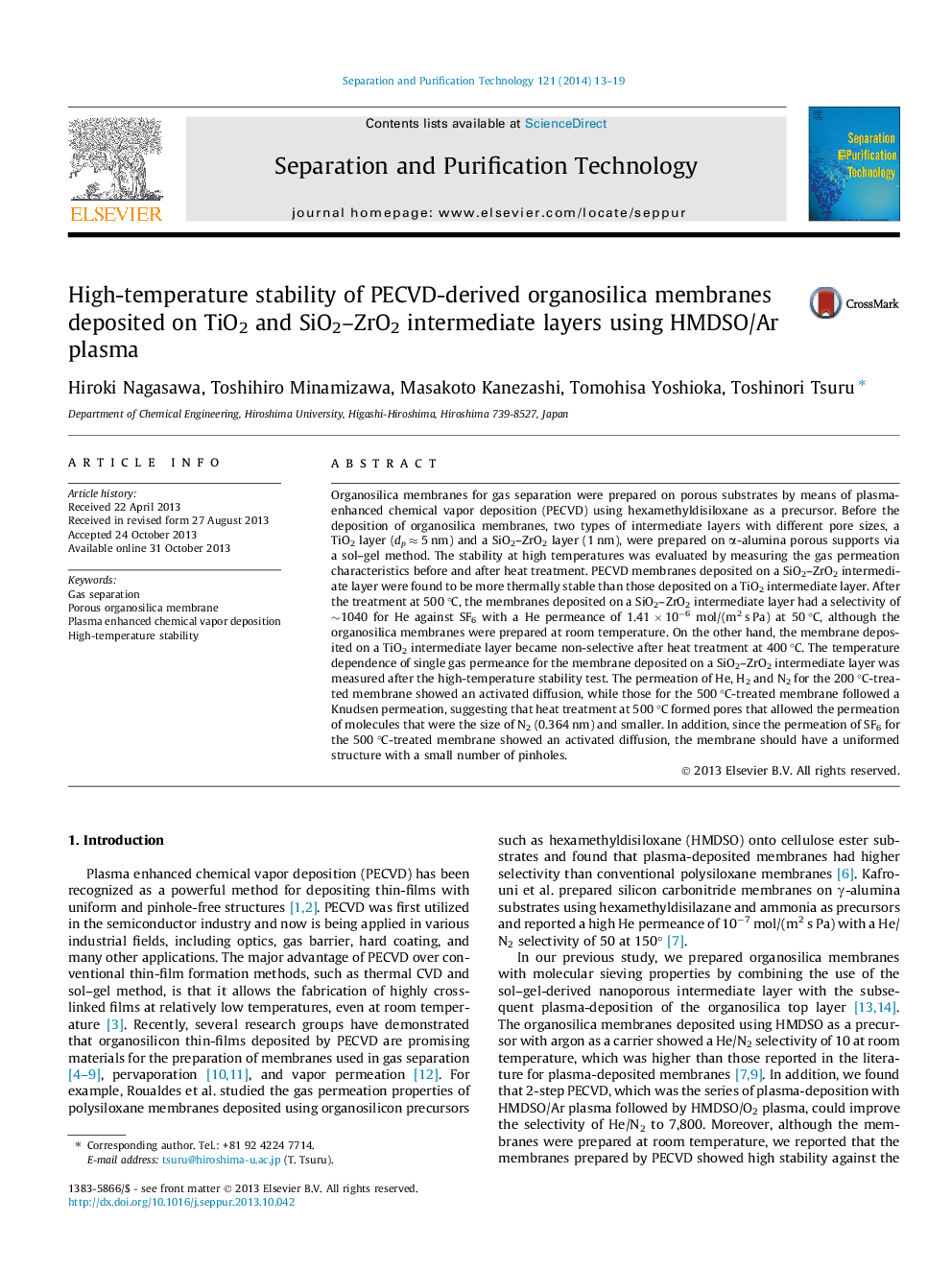| Article ID | Journal | Published Year | Pages | File Type |
|---|---|---|---|---|
| 641416 | Separation and Purification Technology | 2014 | 7 Pages |
•Organosilica membranes were prepared at room temperature by PECVD technique.•The membranes were prepared on two types of intermediate layers with different pore sizes.•The membranes with SiO2–ZrO2 intermediate layer showed good stability up to 400 °C.•The pore structure of PECVD layer was changed by heat treatment at 500 °C.
Organosilica membranes for gas separation were prepared on porous substrates by means of plasma-enhanced chemical vapor deposition (PECVD) using hexamethyldisiloxane as a precursor. Before the deposition of organosilica membranes, two types of intermediate layers with different pore sizes, a TiO2 layer (dp ≈ 5 nm) and a SiO2–ZrO2 layer (1 nm), were prepared on α-alumina porous supports via a sol–gel method. The stability at high temperatures was evaluated by measuring the gas permeation characteristics before and after heat treatment. PECVD membranes deposited on a SiO2–ZrO2 intermediate layer were found to be more thermally stable than those deposited on a TiO2 intermediate layer. After the treatment at 500 °C, the membranes deposited on a SiO2–ZrO2 intermediate layer had a selectivity of ∼1040 for He against SF6 with a He permeance of 1.41 × 10−6 mol/(m2 s Pa) at 50 °C, although the organosilica membranes were prepared at room temperature. On the other hand, the membrane deposited on a TiO2 intermediate layer became non-selective after heat treatment at 400 °C. The temperature dependence of single gas permeance for the membrane deposited on a SiO2–ZrO2 intermediate layer was measured after the high-temperature stability test. The permeation of He, H2 and N2 for the 200 °C-treated membrane showed an activated diffusion, while those for the 500 °C-treated membrane followed a Knudsen permeation, suggesting that heat treatment at 500 °C formed pores that allowed the permeation of molecules that were the size of N2 (0.364 nm) and smaller. In addition, since the permeation of SF6 for the 500 °C-treated membrane showed an activated diffusion, the membrane should have a uniformed structure with a small number of pinholes.
